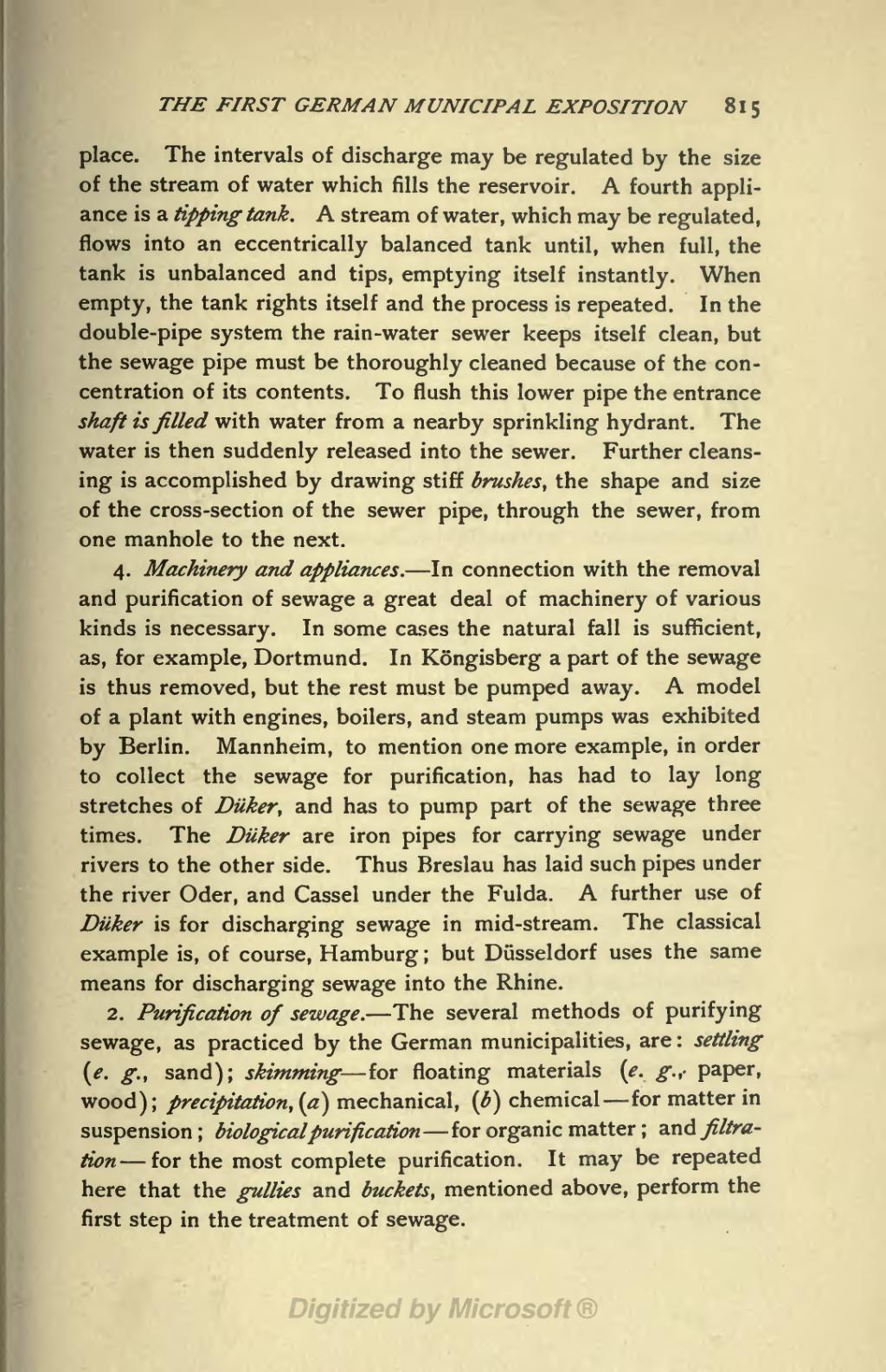THE FIRST GERMAN MUNICIPAL EXPOSITION 815
place. The intervals of discharge may be regulated by the size of the stream of water which fills the reservoir. A fourth appli- ance is a tipping tank. A stream of water, which may be regulated, flows into an eccentrically balanced tank until, when full, the tank is unbalanced and tips, emptying itself instantly. When empty, the tank rights itself and the process is repeated. In the double-pipe system the rain-water sewer keeps itself clean, but the sewage pipe must be thoroughly cleaned because of the con- centration of its contents. To flush this lower pipe the entrance shaft is filled with water from a nearby sprinkling hydrant. The water is then suddenly released into the sewer. Further cleans- ing is accomplished by drawing stiff brushes, the shape and size of the cross-section of the sewer pipe, through the sewer, from one manhole to the next.
4. Machinery and appliances. In connection with the removal and purification of sewage a great deal of machinery of various kinds is necessary. In some cases the natural fall is sufficient, as, for example, Dortmund. In Kongisberg a part of the sewage is thus removed, but the rest must be pumped away. A model of a plant with engines, boilers, and steam pumps was exhibited by Berlin. Mannheim, to mention one more example, in order to collect the sewage for purification, has had to lay long stretches of Duker, and has to pump part of the sewage three times. The Duker are iron pipes for carrying sewage under rivers to the other side. Thus Breslau has laid such pipes under the river Oder, and Cassel under the Fulda. A further use of Duker is for discharging sewage in mid-stream. The classical example is, of course, Hamburg ; but Diisseldorf uses the same means for discharging sewage into the Rhine.
2. Purification of sewage. The several methods of purifying sewage, as practiced by the German municipalities, are : settling (e. g., sand); skimming for floating materials (e. g.,- paper, wood); precipitation, (a] mechanical, (b} chemical for matter in suspension ; biological purification for organic matter ; and filtra- tion for the most complete purification. It may be repeated here that the gullies and buckets, mentioned above, perform the first step in the treatment of sewage.
